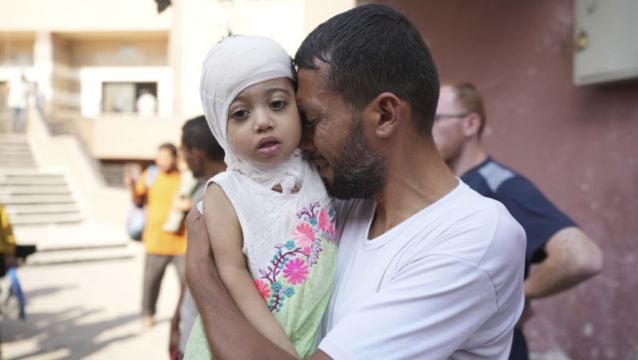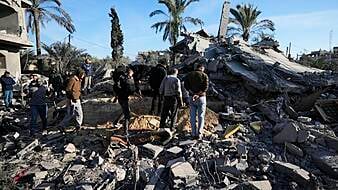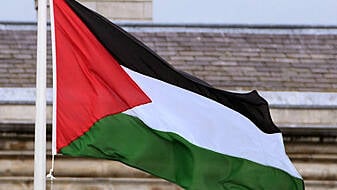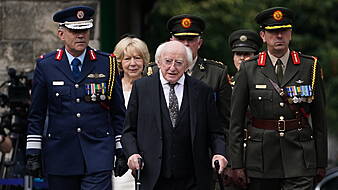Twenty-one critically ill children are due to leave Gaza later in the first medical evacuation since the territory’s sole travel crossing was shut down in early May, Palestinian officials said.
The nearly nine-month Israel-Hamas war has devastated Gaza’s health sector and forced most of its hospitals to shut down.
Health officials say thousands of people need medical treatment abroad, including hundreds of urgent cases.
Family members said a tearful goodbye to the children as they and their escorts left the Nasser Hospital in the southern Gaza town of Khan Younis bound for the Kerem Shalom cargo crossing with Israel. It was not clear where they would receive treatment.
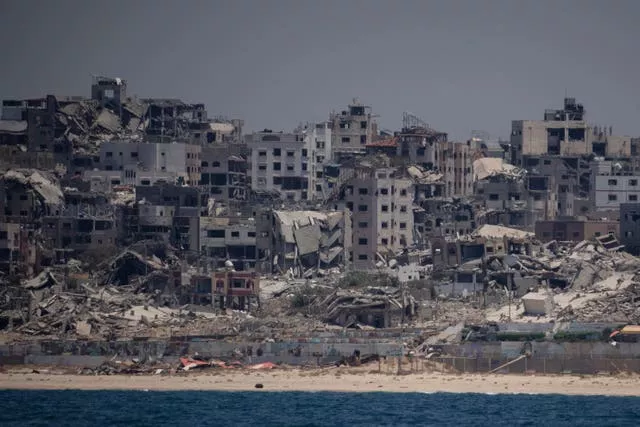
The Rafah crossing between Gaza and Egypt, the only one available for people to travel in or out, shut down after Israeli forces captured it during their operation in the city early last month. Egypt has refused to reopen its side of the crossing until the Gaza side is returned to Palestinian control.
Six of the children were transferred to the Nasser Hospital from the Al-Ahli Hospital in Gaza City earlier this week. Five have malignant cases of cancer and one suffers from metabolic syndrome. That evacuation was organised by the World Health Organisation (WHO).
At a press conference at Nasser Hospital on Thursday, Dr Mohammed Zaqout, the head of Gaza’s hospitals, said the evacuation of the 21 children was being done in co-ordination with the WHO and three American charities.
Dr Zaqout said more than 25,000 patients in Gaza require treatment abroad, including some 980 children with cancer, a quarter of whom need “urgent and immediate evacuation”.
He said the cases included in Thursday’s evacuation are “a drop in the ocean” and that the complicated route through Kerem Shalom and into Egypt cannot serve as an alternative to the Rafah crossing.

At Nasser Hospital earlier on Thursday, many of the families appeared anxious. Most relatives had to stay behind, and even those allowed to accompany the patients did not know their final destination.
Nour Abu Zahri wept as he kissed his young daughter goodbye. The girl has severe burns on her head from an Israeli air strike. He said he did not get clearance to leave Gaza with her, though her mother did.
“It’s been almost 10 months, and there is no solution for the hospitals here,” he said.
Kamela Abukweik burst into tears after her son got on the bus heading to the crossing with her mother. Neither she nor her husband were cleared to leave.
“He has tumours spread all over his body and we don’t know what the reason is. And he constantly has a fever,” she said. “I still don’t know where he is going.”
On Thursday, the Israeli military ordered new evacuations from Gaza City neighbourhoods that were heavily bombed and largely emptied early in the war.
The latest orders apply to Shijaiyah and other neighbourhoods where residents reported heavy bombing on Thursday.
First responders with Gaza’s Civil Defence said airstrikes hit five homes, killing at least three people and wounding another six. It said rescuers were still digging through the rubble for survivors.
Gaza City was heavily bombed in the opening weeks of the war. Israel ordered the evacuation of all of northern Gaza, including the territory’s largest city, later that month. Hundreds of thousands of people have remained in the north, even as Israeli troops have surrounded and largely isolated it.
Shijaiyah residents in a messaging group shared video showing large numbers of people fleeing the area on foot with their belongings in their arms.
International criticism has been growing over Israel’s campaign against Hamas as Palestinians face severe and widespread hunger. The war has largely cut off the flow of food, medicine and basic goods to Gaza, and people there are now totally dependent on aid.
The top United Nations court has concluded there is a “plausible risk of genocide” in Gaza — a charge Israel strongly denies.
